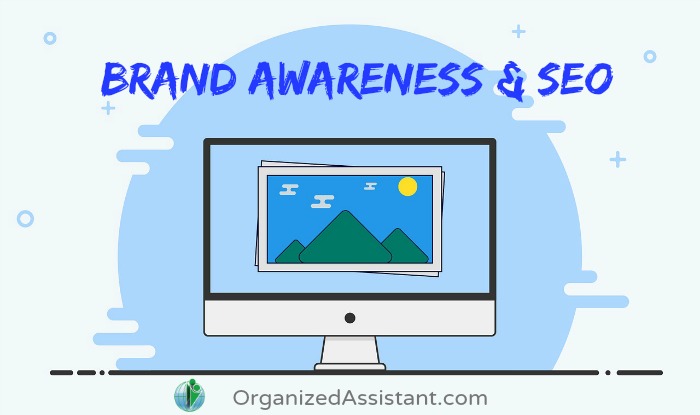The Importance of Unified Branding, and What That Means
This page may contain links to Amazon.com or other sites from which I may receive commission on purchases you make after clicking on such links. Read my full Disclosure Policy

Before I started my own business, I thought branding was all about the logo and the tagline. Now I understand that there’s a lot more to it – your brand is really about your values and what makes your business unique. Today’s guest blogger, Mary Grace, explains how unified branding can help you increase your online visibility and make important connections with your clients and prospects.

Unified branding is a clear message to your clients, casual browsers, and Google. This means increasing traffic, reducing bounce rates, and at the core, allowing people to find and know your company.
Technical Branding: Onsite and Offsite
Technical branding will be the most important part of defining your company. Declaring boldly who you are, with conclusive onsite tags and constructive link building, will mean rankings not only for your brand name, but for the keyword clusters that are unique to your company.
Onsite
Onsite branding is defining yourself both to your readers and (when combined with appropriate tags) to Google. This results in big organic traffic pay-off and additional benefits from any non-linking assets. Owning who you are and sending that clear message out adds trust, traction, and value to your company. Your brand name (by itself or when combined with the things around it) should be easily found by a stranger to your site. It should also be able to convey the purpose of your site within 30 seconds. This means including your brand name in the header, and mentioning it in a few relevant pages across your website. Of course a big, easy to click home button on the top as both a header and additional branding is always a great way to accomplish this.
Reinforcing your onsite branding by completing the technical requirements will push the already awesome messages you have on your site out to Google. There are tons of free tools to use, like Screaming Frog, which offers a clear answer about what sort of title tags, h-tags, or meta descriptions are missing, duplicated, or a little off in length. While your brand name is important, using distinctive, niche specific keywords will boost your brand name and allow you to give a very clear summary to Google about your site. Don’t label every page with your exact business name, but do include your branded name when relevant; you’re about more than your name, but it’d be strange if you never say it. With a variety of accompanying keywords, it gives more insight to what’s on your site, and what your brand represents.
Before investing time and effort into your brand, trademark your business to avoid a tough uphill battle against someone else with the same name. Repeated names are a tough battle, especially when buying digital ads, or just trying to rank for yourself.
See also: How to choose a great name for your organizing business
Offsite
While defining yourself across the web, offsite branding will help you gain brand authority. Even ‘silly’ things like confirming your listing in the Yellow Pages or Yelp are links back to your website with your brand name. It all adds up to people being able to find you, because external listings are all part of the way for Google to confirm that you are you. It is necessary for your company name to be consistent throughout the site. Even small errors like having a slightly off name in local listings could have lasting impacts for people trying to google you or get to your site. There are so many options when exploring offsite brand-building, but a consistent voice will help on any platform.
Visual Cues: Style Choices Mean A Lot to Your Reader
Technical branding of your company name and the keyword clusters that can be used to describe or summarize it are vital to creating a unified brand. However, the value of that brand face comes from the unique identity attached to it. Are you trying to give off the impression that you are trustworthy, exciting, or environmentally friendly? Using a collection of keywords will help, but maintaining an onbrand face will be the most helpful to your users.
What Makes Your Company Special?
Defining yourself beyond your name is vital to brand creation. Consistent, functional themes are great ways to entice users to stay on site and focused on your message. If your company is focused on being trustworthy, using a blue theme with sharp lettering paints a picture of your values to your customer. Defining yourself as a company and using your website as a visual representation of that means more loyal customers and increased value.
If you own multiple sites or have a diversified small company, using visual cues to separate brands or products will allow customers who are loyal to your company distinguish between the variety of values that each product stands behind. For example, if your consulting company is all about fast movement and growth, it may not match with the trustworthy face you’d like for your copywriting site. They should still link to each other, but maintaining the brand identity of each endeavour will allow you to demonstrate distinctive values for each.
See also: Establishing Your Business Brand
What This Means for a Growing Firm
A solid brand foundation will help forward bound companies to grow. It helps readers identify your ads, it defines a company, and it gives clear messages to Google (which means way more people can find you). If you have trouble solidifying your brand, hiring a designer for a one-time mission can be an easy solution. If you want to master your own branding and the marketing of it, you can always look into a digital marketing certification or, if you aren’t quite ready to define who you are, and what your brand is about, take some time to develop as a company. Whether it’s customer service, or a belief in getting people the things they need, find what makes your brand special.
Image © trueffelpix / depositphotos




Branding is a fascinating topic. Some think it is silly, and about logos, but I agree that it is the essence of who your company is!
Absolutely – you don’t even need a logo to have a brand, though it definitely helps!
Great post, Janet! It’s interesting that you mentioned that blue is a trustworthy color. I always felt that way so my site has always been blue. =) Because I have two businesses, I like to unify with the color and logo layout. They are similar but no exactly the same. I hope it comes across to others that both sites are owned by the same person. Thanks for sharing.
That’s why mine is blue too. 🙂
Great post! A true branding gospel 🙂